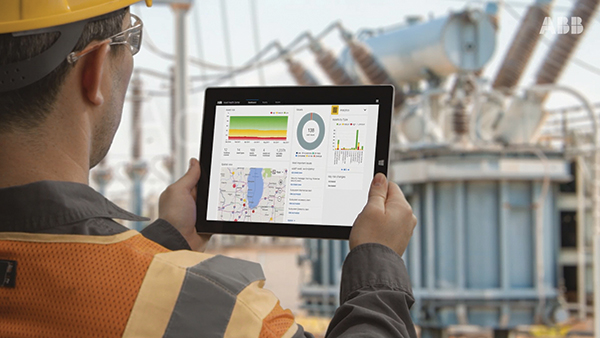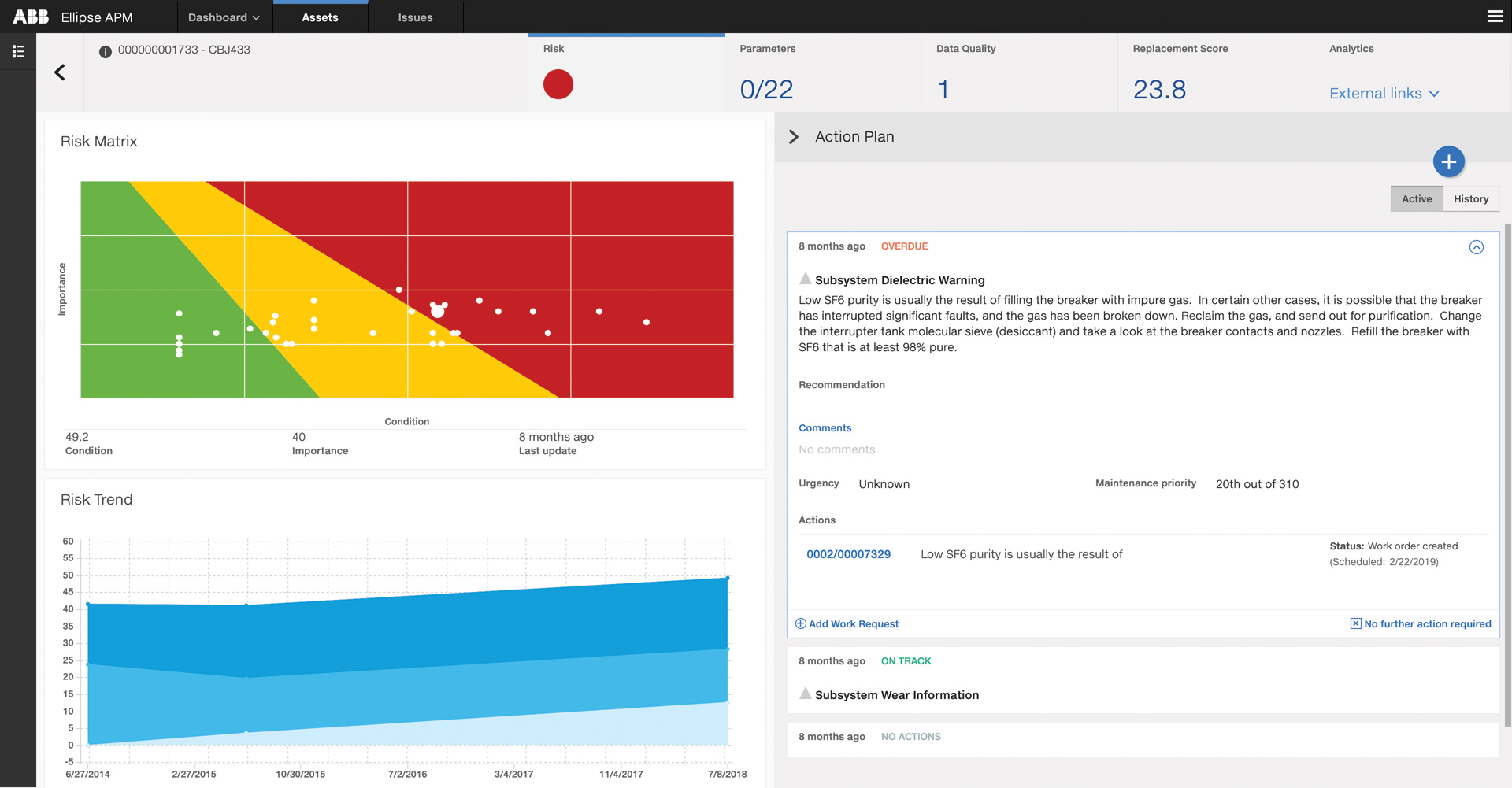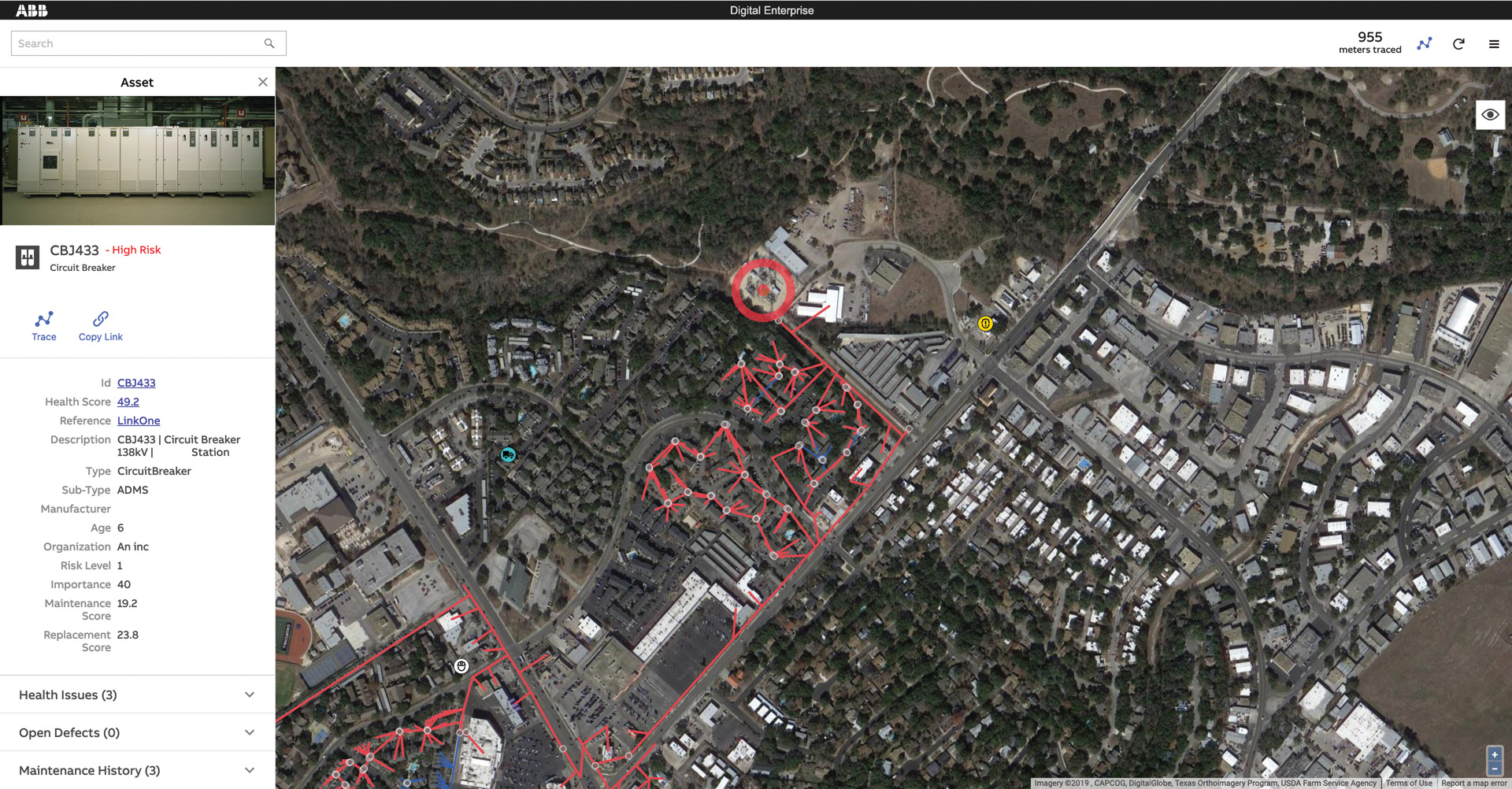Like many utilities, Ameren Illinois, a subsidiary of St. Louis-based Ameren Corporation, knew it needed to modernize its grid infrastructure and improve how it monitored its assets to provide reliable power to a customer base of 1.2 million, which makes up 80 percent of Illinois’ population. This presented a significant challenge.
Electric utilities have traditionally carried out regularly scheduled "checkups" to maintain their grid infrastructure. While these checkups can detect obvious or crisis-level issues, they often cannot predict conditions that could lead to possible failures down the line.
The challenges were significant. Ameren had more than 1,200 substations over 4,500 miles of transmission lines and 46,000 miles of distribution lines that needed to be maintained and upgraded. This upgrade involved thousands of transformers, circuit breakers and other assets. Key asset data resided in various organizational silos — nameplate, dissolved gas analysis, inspection, oil test results and maintenance data. There were resource constraints and limited maintenance to deal with, and it was apparent they needed to move from a more traditional time-based monitoring of these assets to one that was more condition-based.
Additionally, there were critical asset health indicators that could potentially be lost in the massive volume of data collected. It was easy to get to hundreds, if not thousands, of data points per every asset class, multiplied by thousands of assets per class. There were potentially millions of data point inputs for asset health evaluation that a maintenance engineer had to confront.
To solve the equation, Ameren determined that it needed new analytical models for interpreting data and drastically improving the health knowledge of each asset. In addition, Ameren needed to minimize and prioritize preventive activities as well as be able to predict and anticipate asset failures in advance, that led to concrete actions and more informed decision-making capabilities.
Answering asset management questions had traditionally been about scheduled maintenance and scheduled replacement of assets as they age. With modern asset management, the paradigm would shift to more of a risk- and condition-based asset management, where analyzing condition data about assets could help to determine what should be maintained, versus what should be replaced, and when. This approach, however, would require gathering vast amounts of data on each asset from multiple data silos across the enterprise, evaluating it to determine the health of the asset and manage its risk.
As part of Ameren ‘s multi-million-dollar commitment to modernize its energy delivery infrastructure across their service territory in Illinois, Ameren Illinois sought the expertise of a Switzerland-based technology provider’s asset management software solution.
This software will allow Ameren to predict more acccurately and prevent the failure of mission-critical equipment that delivers electricity to its electricity consumers.
While standard checkups that have been carried out for years to maintain grid infrastructure can detect obvious or crisis-level issues, they often cannot predict conditions that could lead to possible failures down the line. The software provided by Ameren’s technology partner, on the other hand, offered a prescriptive approach to maintenance, using sensors, data and advanced analytics to continually assess the real-time condition of assets, determine when they might need repair or replacement and to alert the stakeholders. This allowed Ameren to prioritize short- and long-term maintenance needs and drive productivity, safety and return on investment from critical grid assets.
Improving processes through risk-based optimization
Ameren Illinois worked with its technology partner to install the advanced asset management solution and had time-to-value portfolio analytics delivered within 90 days. This resulted in more than 2,000 Ameren transformers loaded into the software solution system within 90 days of implementation. Key asset data was consolidated from multiple third-party enterprise systems, and continuous analysis of data in the cloud triggered automatic alerts, warnings, explanations and action recommendations which the utility had not had previously.
The new asset management system gave Ameren operators fleet-wide visibility on thousands of critical Ameren substation assets. Ameren was then able to prioritize high-risk transformers for immediate attention based on asset risk. It enabled maximized resources, for example, consolidating data analysis which could aid maintenance engineers.
Health model inputs
Another benefit of having an upgraded, digitalized asset management monitoring system in place was being able to construct a new predictive digital model from all the available data. This available data can be consolidated into a single holistic health model, providing more flexibility and data inputs. Offline databases, online sensors, real-time events, alarms and loads could be uploaded to the new asset health model for data processing, analytics and performance models, leading to more accurate predictions and risk scores.
Multiple data sources were combined within the system to produce a holistic performance model of the asset’s condition. The model can be adjusted to suit the availability of data in a given organization, specific attitudes to risk. There was a typical progression in the data sources used starting with using offline sources first, then near real-time information as communications infrastructure and sensors are rolled out.
Offline databases, online sensors and real-time events, alarms and loads could be uploaded to the new asset health model for data processing, analytics and performance models, leading to more accurate predictions and risk scores.
Connected asset lifecycle management
Asset management spans multiple systems and actors in a typical business process. The typical asset management lifecycle in a standard transformer, for example, connects and collects data from all available data sources in the transformer, analyzes and predicts the data, making a more informed decision using advanced operational business intelligence, and allowing the operator to act and track enterprise asset and work management with greater confidence. In this case, Ameren used the asset management software solution to consolidate Ameren transformer nameplate, dissolved gas analysis, inspection and maintenance data analyzed via Asset Performance Models (APM). It leveraged existing Ameren digital infrastructure and data and made predictions that were actionable to the other actors in the business process.
With connected asset lifecycle management, there is a need to automate and orchestrate the flow of work around the entire business process lifecycle, making predictions actionable through digitization across the asset lifecycle. Supporting the complete business process, there are typically at least three interoperating systems involved in supporting the asset lifecycle. An Enterprise Asset Management (EAM) system is one input to an APM system.
But an APM system also drives work requests in EAM. These work requests could be processed into Work
Orders as a future possibility and dispatched to field crews by a workforce management system, thereby completing the asset lifecycle management cycle.
Future possibilities: the digital enterprise
The digital enterprise is an evolution of Ameren’s technology solution provider that extends the accuracy of representation of real-world assets by utilizing all the data available to allow for a more accurate, unified and instant presentation of available assets. This solution also enables utilities and industries to efficiently handle data streams from the combination of information technology (IT), operational technology (OT) and the Internet of Things (IoT). The solution’s digital enterprise concept is essentially a digital twin. This digital twin provides a virtual view and one single pane of glass of the different power grid assets that allows an operator to detect the cause of a potential power outage more easily; thus, dispensing from a physical site visit. With single-point access to all assets, systems, analytics, business process and the workforce, utilities can quickly weigh risk, cost impact and safety to make better decisions on the spot.
Conclusion
Ameren Illinois was faced with a significant challenge to move from a reactive asset management process to a more proactive process. The benefits were clear, but the path to get there was not. Large volumes of data combined with thousands of assets required a systematic, digitized approach. The utility needed a holistic health model and predictivity system that turns that data into actionable information. After adopting a new asset performance management system, it was able to make an immediate impact on more than 2,000 transformers across Illinois. The impact was seen immediately by a reduction in scheduled tasks based on the visibility of the actual condition of assets. APM achieves this by constructing a digital health model and running configurable predictivity analytics that measure performance and criticality based on risk. Predictions must be turned into action, so APM generates work through interoperating with EAM systems.
Ameren has made a significant investment in its resources to modernize its grid infrastructure across its service territory throughout most of Illinois. This strategic maintenance transformation is helping to deliver value and electricity to their 1.2 million customers in a much safer, reliable and economical way.


Donald Borries is the supervising engineer for Substation Maintenance Engineering, Ameren Illinois. He is responsible for the analysis of new smart grid devices and the evaluation of equipment, ranging from 12-345kV. Additionally, he leads a diverse staff in the areas of substation emergent failures, event analysis, NERC compliance, asset health analytics and budgeting for more than 1200 substations within Ameren Illinois. Borries received his BSEE degree from the University of Illinois and has recently retired after 35 years from the U.S. Coast Guard Reserves.

Since March 2018, Bryan Friehauf has served as the global head of the Enterprise Software group within ABB’s Power Grids business. Friehauf was the general manager for GE’s Asset Management business from 2011 to 2018. Before joining GE, Friehauf held multiple senior management positions as part of the former Mincom software business that was later acquired by ABB in 2011. Bryan has a degree from the University of Colorado, Boulder.








